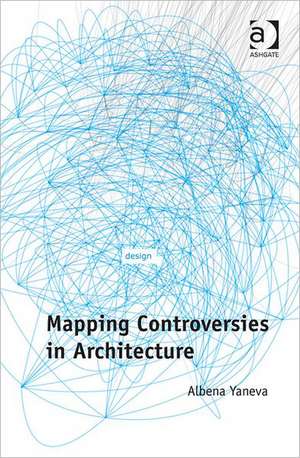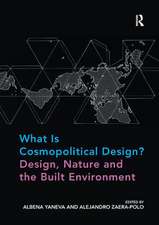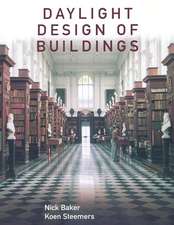Mapping Controversies in Architecture
Autor Albena Yanevaen Limba Engleză Hardback – 28 apr 2012
| Toate formatele și edițiile | Preț | Express |
|---|---|---|
| Paperback (1) | 481.50 lei 43-57 zile | |
| Taylor & Francis – 6 oct 2016 | 481.50 lei 43-57 zile | |
| Hardback (1) | 820.71 lei 43-57 zile | |
| Taylor & Francis – 28 apr 2012 | 820.71 lei 43-57 zile |
Preț: 820.71 lei
Preț vechi: 1103.24 lei
-26% Nou
Puncte Express: 1231
Preț estimativ în valută:
157.06€ • 163.04$ • 130.96£
157.06€ • 163.04$ • 130.96£
Carte tipărită la comandă
Livrare economică 24 martie-07 aprilie
Preluare comenzi: 021 569.72.76
Specificații
ISBN-13: 9781409426684
ISBN-10: 1409426688
Pagini: 144
Ilustrații: Includes 20 colour illustrations
Dimensiuni: 174 x 246 x 14 mm
Greutate: 0.5 kg
Ediția:New ed
Editura: Taylor & Francis
Colecția Routledge
Locul publicării:Oxford, United Kingdom
ISBN-10: 1409426688
Pagini: 144
Ilustrații: Includes 20 colour illustrations
Dimensiuni: 174 x 246 x 14 mm
Greutate: 0.5 kg
Ediția:New ed
Editura: Taylor & Francis
Colecția Routledge
Locul publicării:Oxford, United Kingdom
Notă biografică
Dr. Albena Yaneva, Architecture Research Centre, University of Manchester, UK
Recenzii
'By crossing the tools of science studies with the digital techniques of mapping controversies, this book renews the critique of architecture. It offers a new way to place architecture and design as one of the most exciting ways to explore the common world because it takes controversies as the normal state of affair. With many lively examples it is a masterpiece of theory made empirical.' Bruno Latour, Institut d'Études Politiques de Paris, France 'Yaneva brilliantly proposes a new and robust ethnographic approach to built form: mapping the controversies in which they emerge and seeing them as "connectors" with unique properties - neither just reflections of society or constructors of it, nor as cold materials - but as dynamically tying together different media, materials, peoples and things in a distinctly architectural way. This represents a profound shift in the way we can think anthropologically about the analysis of buildings and what buildings "do" and how they emerge socially and materially in the widest possible sense.' Victor Buchli, University College London, UK 'Mapping Controversies in Architecture is a fresh and highly productive challenge to the tendency of architectural theory to represent architecture as a static object. In Yaneva's richly documented analysis, buildings become animated ecosystems, "in the making" long after the completion of their final design. Yaneva's innovative methodology, hybridizing parametric animation and 'post-parametric' computation, unfolds buildings as multi-dimensional controversies. Political tides, technological shifts, financial crises and aesthetic experimentation are but a few of the actors Yaneva follows in demonstrating architecture's fundamentally connective role. In doing so, she extends a powerful platform for discourse well beyond the architectural community.' Ariane Lourie Harrison, Yale School of Architecture, USA ’Yaneva makes a heartfelt attempt to address the very real problem currently threate
Cuprins
Prologue, Albena Yaneva; Introduction, Albena Yaneva; Part 1 Rethinking Bifurcations, Albena Yaneva; Chapter 1 The Impasse of Representation, Albena Yaneva; Chapter 2 On the Boundary Between Architecture/Society, Albena Yaneva; Chapter 3 Architecture/Society Reshuffled, Albena Yaneva; Part 2 Mapping Processes, Albena Yaneva; Chapter 4 Controversies in Architecture, Albena Yaneva; Chapter 5 Visualizing Controversies, Tracing Networks, Albena Yaneva; Chapter 6 Mapping Controversies, Albena Yaneva; Conclusion, Albena Yaneva;
Descriere
This book tackles a number of challenging questions: How can we conceptualize architectural objects and practices without falling into the divides architecture/society, nature/culture, materiality/meaning? How can we prevent these abstractions from continuing to blind architectural theory? What is the alternative to critical architecture? It places architecture at the intersection of the human and the nonhuman, the particular and the general. It allows its networks to be re-established and to run between local and global, social and technical. Mapping controversies can be extrapolated to a wide range of complex phenomena of hybrid nature






